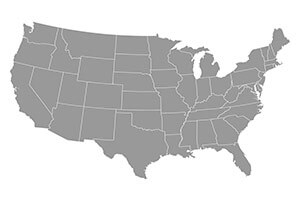
Honey flows in the southern half of the U.S. have been better thus far than last season. Good rainfall and an early spring allowed colonies to get a jump on the season. At times, wet, stormy weather has prevented normal bee foraging, but beekeepers are hoping for more stable weather for the remainder of the season. A mild winter and better overwintering has also helped bees in the northern half of the country. Beekeepers have not had to replace as many deadouts and colonies were stronger coming into spring. Unfortunately, this was not the case everywhere since devastating losses continue to be reported by some beekeepers.
Strong colonies were staying ahead of the beekeeper in many cases resulting in increased swarming being reported. Moisture level reports have been mixed, but as this was written, lack of moisture had not caused any serious problems with nectar flows. However, clover and alfalfa flows were coming on soon, so beekeepers had their fingers crossed that plants would continue to do well and receive adequate moisture for nectar production.
Reports of increasing amounts of foreign honey being offered to U.S. buyers at lower prices does not bode well for the wholesale honey market during the coming months. On the other hand, most of our reporters continue to report a strong retail honey market, especially for locally produced and marketed honey.
NORTHEAST
Beekeepers said that the first part of spring was rather erratic. This made some of the early flows from maple, dandelion, henbit, wild mustard, fruits and berries spotty. Beekeepers were preparing overwintered colonies for major flows, while divides, packages and nucs were being stimulated with syrup. Some package bee and nuc orders came later than normal, but beekeepers were making the best of the situation with stimulative feeding. Orchard pollination success was varied due to sporadic spring weather. Beekeepers were hoping that later spring black locust, clover, thistle, tulip-poplar and sumac flows would be better.
MIDEAST
Beekeepers were obtaining honey from tulip-poplar, wildflowers, black locust, thistle, persimmon, sumac, assorted berries and clover. In addition, reporters said that many new colonies started were still being fed until they build up their populations. Earlier in the spring bees built up well on maples, redbud, elm, henbit, wild mustard and assorted fruit trees and wildflowers. Winter loss was low due to the mild winter. A number of new beekeepers started this spring in addition to some existing beekeepers expanding their operations. Some locations were low on ground moisture and could use rain to help later spring and early summer honey flows. Very little of last season’s honey crop remains unsold and local customers are looking forward to new crop honey being extracted this summer.
SOUTHEAST
Early honey flow estimates were generally better this season in Florida from orange, ti ti, gallberry, palmetto and wildflowers. Some beekeepers had higher than normal winter losses, while others said their bees came through the winter fine. Rainfall has helped keep better ground moisture conditions, but at the same time beekeepers have said that it has hampered some of their flows. In Georgia beekeepers said colonies were making honey from berries, palmetto, clover, locust and assorted wildflowers. In some cases swarming was mentioned as being heavier than normal. In Mississippi and Alabama colonies were also making honey from assorted wildflowers, privet hedge and clover.
Brisk package bee and queen sales have kept producers in the Southeast very busy this spring. Some colony expansion continues in the Southeastern states, especially among hobby beekeepers. Varroa, viruses and small hive beetles remain major management problems for beekeepers, but new beekeepers are learning to keep bees despite these pests and viruses. Honey sales have remained good at both the wholesale and retail levels, although price offerings are still down for larger lots of honey. Price ranges are varying greatly due to the discrepancy between large-lot and small-lot sales. Reporters gave a range of between $1.60 and $2.30 for white honey, while the range for amber grade offerings are from $1.40 to $2.00 per pound.
SOUTHWEST
A mild winter and early spring allowed colonies to build up well this spring. Spring honey flows were generally good, but at times were hampered by frequent heavy rains. Excessive swarming was also mentioned as a problem due to the larger bee populations. Beekeepers mentioned that bees were working numerous wildflowers, berries, citrus, brush, horsemint, cow peas, rattan, huckleberry, vetch, alfalfa and clover. In late April and early May colonies were transported to the coastal areas for the major flow from tallow. Although this honey is rather dark in color, the flow often lasts several weeks and beekeepers can sometimes make two to three supers per hive from this source alone.
Local honey sells exceptionally well in the Southwest and many varieties never make it out the region since local buyers consume it all. In addition to good retail sales, beekeepers are also continuing to see good small-lot sales at the wholesale level. Larger beekeepers, however, continue to indicate lower offering prices for larger lots of honey that are competing with foreign imports.
EAST CENTRAL
An early, but somewhat erratic spring allowed good colony build up, but also brought beekeeper comments such as “had to start feeding again” or “after the recent rain, a number of colonies swarmed”. Bees generally overwintered well in this area with some notable exceptions among commercial beekeepers. Package bee and queen deliveries were either …


